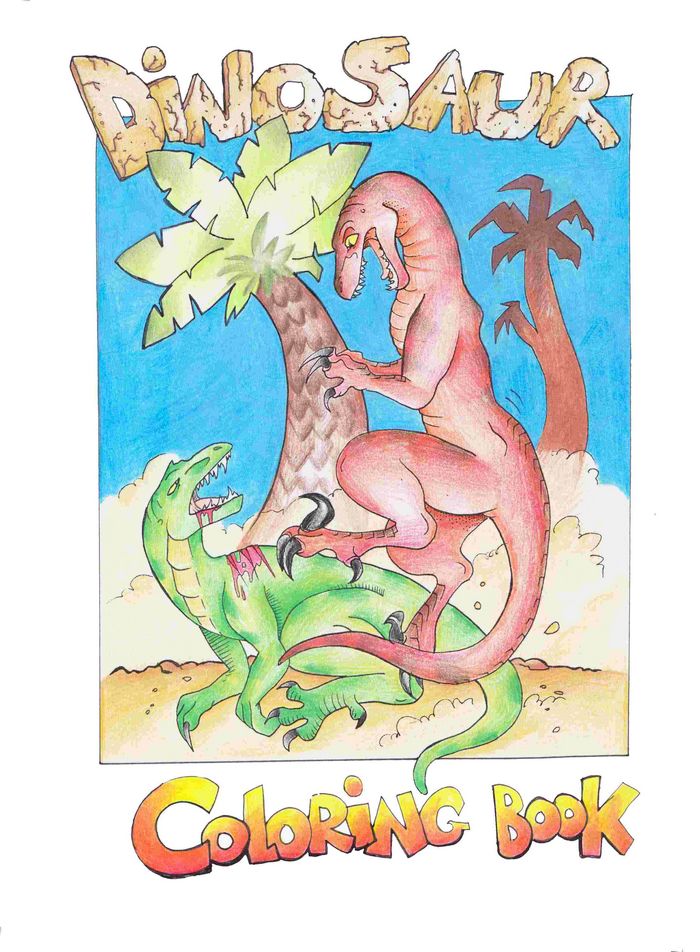Triceratops is one of the classic dinosaurs discovered during the grand days of dinosaur bone hunting in the American West back in the 19th Century. Triceratops looms large in the popular imagination of generations of kids and adults alike and he is in no danger of disappearing anytime soon.
That big, bony frill that extends back from the head to protect soft neck tissue and present a large and frightening front to attackers makes Triceratops immediately recognisable, along with three big horns and a beak- like jaw. That massive head took up nearly one third of its total length and with those long horns, huge frill and nine tonnes of pure dinosaur muscle he must have been a formidable opponent. Considering that a modern TLB/JCB weighs in at just over six tonnes, enough to push around tonnes of earth, then a fully grown Triceratops would have been able to shunt around some serious piles of predator beefcake. Of course, there were no cattle around back then, but I think you get the point.
Triceratops is part of a larger family called Ceratopsians, some with even bigger and more dramatic frills and horns than Triceratops. But the first to capture all of our imaginations still remains one of the most well-known and well-loved of all the classic dinosaurs.
Quick Facts
They are estimated to have reached about 7.9 to 9.0 m (26.0–29.5 ft) in length, 2.9 to 3.0 m (9.5–9.8 ft) in height. Their skulls are amongst the largest of all animals that lived on land, ever. The largest known skull is 2.5 metres in length when complete. A single horn is found on the snout and a pair of horns approximately 1 m long grow out of its head above the eyes.
Triceratops weighed in between 6 and 12 tonnes. That’s almost double the weight of a TLB/JCB backhoe. No doubt about it, he was one big beast.
Order: Ornithischian or bird hipped.
Top Speed:25 kilometres per hour.
Features:Beak for plucking vegetation off low lying plants, with shearing teeth to chop it up for easier digestion.
Never mind the beak – it is those big horns on its head that T Rex had to worry about – up to 1 m long and capable of inflicting serious damage on predators and rival males.
Diet: Herbivore. Ferns, smaller club mosses, cycads, horsetails, and bushy conifers.
Lived: Almost the last of the last of the dinosaurs to evolve before the great extinction at the Cretaceous Tertiary (Palaeogene) boundary. Sixty-eight million years ago to be more precise.
There is little evidence to suggest that they lived in herds but then again there is little evidence to say that they didn’t. Fossils of small family groups have been found which may indicate that they lived in small tight families, but again nothing conclusive.
Shared its world with:Ankylosaurus, Corythosaurus and Dryptosaurus, while being preyed upon by the likes of Tyrannosaurus Rex.
Triceratops fossils have been found in US states of Montana, South Dakota, Colorado and Wyoming, and in the Canadian provinces of Saskatchewan and Alberta.
The first named specimen now attributed to Triceratops is a pair of brow horns attached to a skull roof, found near Denver, Colorado in the spring of 1887. This specimen was sent to Othniel Charles Marsh, who believed that the bones belonged to a particularly large and unusual bison until he realised that they were from a horned dinosaur when a third and more complete skull was discovered. The specimen, collected in 1888 by John Bell Hatcher from the Lance Formation of Wyoming, was given the generic name Triceratops.
And seeing that you are here, grab yourself a copy of our free colouring book, which is full of wonderful dinosaurs and other Mesozoic creatures for you to bring back to life.
Get the DinoZone Free Colouring Book
Hours of creative fun for all the kids in your world. Splash colour across the Mesozoic to make it your own.




